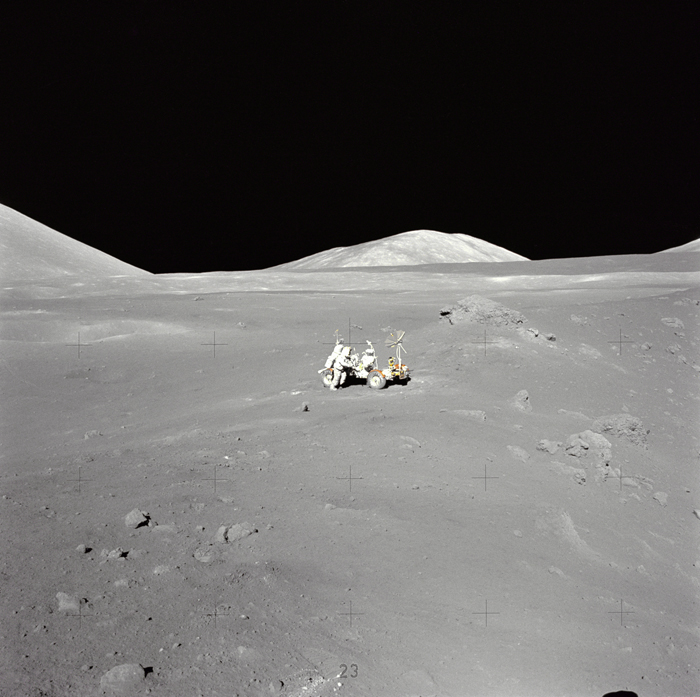Space History Photo: Lunarama

In this historical photo from the U.S. space agency, an extraordinary lunar panorama at Station 4 (Shorty Crater) showing Geologist-Astronaut Harrison H. Schmitt working at the Lunar Roving Vehicle (LRV) during the second Apollo 17 extravehicular activity (EVA-2) at the Taurus-Littrow landing site.
This is the area where Schmitt first spotted the orange soil. Shorty Crater is to the right. The peak in the center background is Family Mountain. A portion of South Massif is on the horizon at the left edge.
Each weekday, SPACE.com looks back at the history of spaceflight through photos (archive).
Breaking space news, the latest updates on rocket launches, skywatching events and more!

The National Aeronautics and Space Administration (NASA) is the U.S. government agency in charge of the civilian space program as well as aeronautics and aerospace research. Founded in 1958, NASA is a civilian space agency aimed at exploring the universe with space telescopes, satellites, robotic spacecraft, astronauts and more. The space agency has 10 major centers based across the U.S. and launches robotic and crewed missions from the Kennedy Space Center in Cape Canaveral Florida. Its astronaut corps is based at the Johnson Space Center in Houston. To follow NASA's latest mission, follow the space agency on Twitter or any other social channel, visit: nasa.gov.
